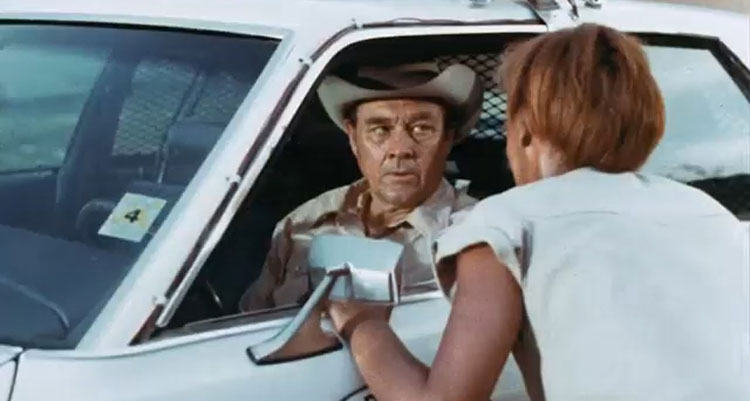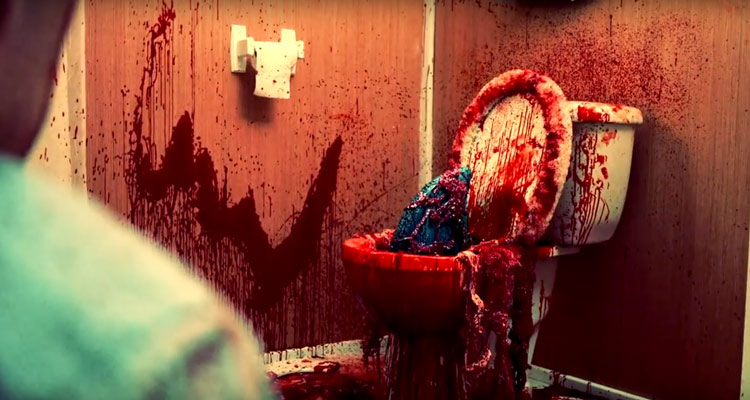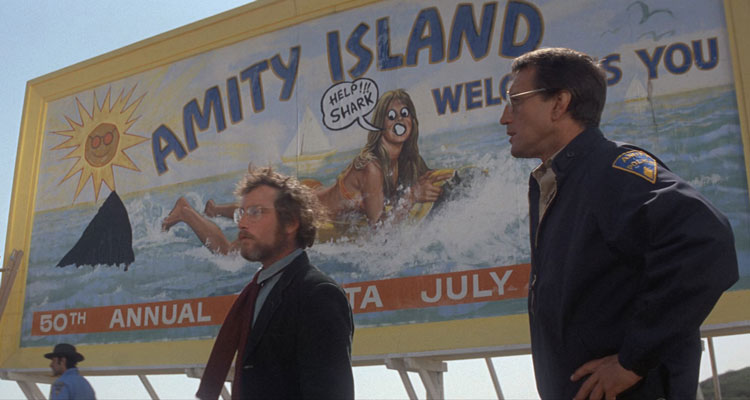I know, I know, this title does sound a little strange. However, are seventies killer bee movies racist is a pretty straight-forward and valid question. I hope that this analysis doesn’t come off as one of those hot woke takes or even worse, virtue signaling. I was in the middle of writing about Killer Bee Movies when I noticed a strange thing about a couple of them. And then I stumbled upon this article, published back 2018, focusing on a single movie but raising a lot of similar issues.
This is more of a historical and cultural examination of how cinema reflects certain aspects of our society. And I hope you will help me figure out is there something there. Racism in the seventies was present everywhere, especially after the turbulent events that happened in the past decade. Sixties saw some of the pivotal events in the fight for equal rights but this is not what we’re here to discuss. I suggest you check out other sources if you want to know more about this subject. I will leave this general link for Racism in the United States and you can work your way from there.
The reason why I was obliged to write this analysis are the four movies released in the span of just two years. All of them featured exactly the same story of killer bee invasion that had basis in true events but just did not sit right with me. The way the story was unfolding, the narrative that was presented to us and finally the terminology that was used all pointed towards a common, underlying cause. There are several things that we need to unpack here. So let’s begin with the very genre of animal attack movies or creature features as they’re commonly known.
Natural horror invasion of the seventies

After Alfred Hitchcock’s The Birds, released in 1963, this sub-genre started thriving. We saw the same thing with the fifties craze of animals exposed to radiation. There are so many movies from the fifties that have basically the same story that they could be considered a genre within a genre. However, just in the seventies there were at least 25 movies featuring animals attacking humans. Not counting our four bee movies. So, definitely this was a trend.
Every possible animal was killing us left and right. From rabbits in Night of the Lepus (1972), frogs in Frogs (1972), snakes in Sssssss (1973), worms in Squirm (1976), octopuses in Tentacoli (1977) to sharks in cult classic Jaws (1975), everybody wanted a piece of the action. The huge success of Jaws further propelled the genre into overproduction. And you have to remember that this was a different time of film-making. So, to see four similar bee movies released within the span of two years is not that strange. It’s just a little piece of information that you have to keep in your mind as we continue to explore this subject.
Killer bee movies of the seventies

There are only two animals that managed to come close to our killer bees. Of course, I’m talking about spiders and ants. Both of them had at least three major movies released in the seventies. Team Ants have Phase IV (1974), It Happened at Lakewood Manor (1977) and Empire of the Ants (1977) in their roster. And Team Spiders have The Giant Spider Invasion (1975), Tarantulas: The Deadly Cargo (1977) and Kingdom of the Spiders (1977). What’s important to note about these movies is the fact that they don’t feature the same story.
The first bee-related movie in this decade did not feature bees at all! Invasion of the Bee Girls (1973) is an exploitation movie with a lot of nudity and tongue in cheek humor. However, we get our first glimpses of the menace in the next one, Killer Bees (1974). In this television movie we follow a strong matriarch who’s able to mysteriously control bees. And, more importantly, instruct them to attack people she doesn’t like. The fact that these are killer bees is just mentioned once. Plus the story is just completely different, more oriented towards family drama than natural horror. However, next four movies are pretty similar, but first we need to learn a bit about killer bees.
The truth behind the killer bees

I am not going to bore you with details here because you can read about killer bee or Africanized honey bee on Wikipedia. Basically what happened is that they took much more resilient and stronger East African lowland honey bee and various European honey bee subspecies and created a new type of bee. This “super-bee” was created to boost honey production, especially in Brazil. However, 26 swarms escaped quarantine in 1957 and slowly spread over the continent over the following decades. I mean the story writes itself. And if you think they didn’t have tabloids or sensationalist newspapers or reports back then you’re wrong.
In one fell swoop you could trash entire Latin America and Africa! And you wouldn’t be factually wrong! It was just pure racism gold. And the fact that the science and “people of authority” were telling you this just added to the validity of the story. Of course, this is not racist in itself, it’s just a strange turn of events. The trick is in the framing, where you can say that the bees from Africa are wild, aggressive, and deadly. Moreover, the crossbreeding with European bees should not have happened in the first place. And the fact that the event took place in Brazil spoke of the lack of regulations and responsibility there.
What’s actually in the movies?

The first one is The Savage Bees from 1976, featuring, for the first time, the story about Africanized bees attacking US citizens. Set in New Orleans, it’s the only out of four movies featuring black actors. Mostly in supporting roles, of course. This trend changed after the second wave of killer bee movies in 2001 and we finally saw black actors in more prominent roles. One was a scientist in 1313: Giant Killer Bees! (2011), other a very dangerous gang leader in Dragonwasps [2012] with the best one wielding a flamethrower in Swarmed (2005).
Now, this doesn’t mean much since a lot of the movies in the seventies did not feature black actors. It’s just another little piece of the puzzle to keep in mind. Dr. Jeff DuRand asks Jeannie Devereaux after she realizes something and grabs the phone: who are you calling? The National Bee Stock center, she replies, continuing: we knew that this had to happen. Jeff asks: what had to happen and Jeannie simply replies The African. It’s the little things like this that make you wonder.
They clearly knew what they were doing and while the people were going “did they just say something racists”, the movie went nope, here are the facts. It’s just so convenient that I have feeling that they are not only exploiting the unfortunate naming and turn of events but also having fun with it. And I don’t blame the actors for this, of course. If there’s anything to this to begin with.
Next up we have a Brazilian doctor explaining what happened:
The attempt was to increase honey production by controlled breeding of the more aggressive African bees with a gentler Italian strain.
The African genes are very strong, the bees produced by mating are extremely aggressive. I had no idea they would become savage as they did.

Again, he’s not technically wrong but the way they went about it just seems off. The traits prescribed to the African bees are aggressive, extremely aggressive and savage. While the Italian bees are gentler. All this within just one scene where they are detailing the bee behavior. They continue to refer to the bees as Africans, another thing that pissed me off. The same thing kept happening in another movie with killer bees: The Swarm. The doctor from Brazil even states that the Africans could cover the entire United States as early as September.
I can go over each movie with quotes from scientists, sheriffs and all the other officials but I think you get the idea. They are all variations of that original concept of invading African species. After the white man has first sacked the African continent, stealing resources even today, they stole the people as well, turning them into slaves. So the words invading Africans simply stand out.
They can be also used as a sick justice motive, where the white Americans now have to pay for their sins. I think that you can find all four movies on YouTube and watch them for free. If you think that these movies are racist please let me know in the comments below. Also, if you think I’m wrong and that this is just all coincidence. Apart from the already mentioned The Savage Bees and The Swarm, we have Terror Out of the Sky and The Bees, both released in 1978.
The fear and the justification

In our previous analysis of the movie Jaws, we explored what the shark represented and many other things. Here we will focus on three main items and we’ll start with the fear and how it might correspond to the subject at hand. Our starting point are two groups of people. We have people who are racists and they know they’re racists and people who might not think that they are racist but actually are.
You can see how this concept of invading Africans corresponds to their fear of black people “invading” their cities. If it happens in nature it must be true is their thinking. This is the fear element. It can be stretched to suburbs and small towns because it’s just a concept. A concept that can fit any type of narrative if you want it to. They are afraid of the black people and think of them as savage and aggressive. Just like the bees are.
Justification comes from the narrative prominent in these movies. Narrative told to us by figures of authority and knowledge like police officers, doctors and scientists. If they say that the “Africans”, as they are calling these killer bees, are like that, well then who am I to doubt them? This corresponds with their already established beliefs and further solidifies them.
Tribalism and the notion of the perfect present state

The reaffirmation of the already perfect present state is the notion that their small towns and communities are perfect in their present state, without any foreign elements. And if the community is perfect, well then the members of that community must be perfect too. This sense of community is not only limited to these movies, it’s used in many others. The concept of sleepy little town in the middle of nowhere is quite a familiar one. However, the reason why I’m mentioning it here is because it’s part of this perfect storm of racist elements.
Deadly Invasion: The Killer Bee Nightmare (1995) is an excellent example of this. This concept was emerges in the tribal system of values as the so-called concept of the ideal village. A village where there’s a clear power structure and everything is gravitates towards “family life” and procreation. So, even if people from, let’s say, next town decide to move to this one, they will also be treated as foreigners. You can say the same thing about anyone really. If you left your small hometown for a bigger one and then came back, you’re also part of the problem.
The reason for this is something I call a theory of limited resources. This is the notion that there’s a limit to all the goods in a certain area and you by simply existing in that area are entitled to them. More people coming means less resources for you, even if that’s factually untrue. And the real effect is completely opposite. But you can see how all of this stems from that tribal system of values and our past. I will also leave you with a direct quote taken from The Swarm:
The African killer bee portrayed in this film bears absolutely no relation to the industrious, hard-working American honey bee to which we are indebted for pollinating vital crops that feed our nation.
The Swarm 1978 – Closing credits
Are movies about bees really racist?

In the end, after all this, I’m still uncertain about the outcome of this analysis. These movies certainly have racist tones that are obvious but the real question is how far those tones go? Did they made these movies because the audience responded to them in a positive way and liked the narrative? Did they made so many of them because they were relatively cheap and easy to make? Was the motive from the film-makers side purely financial while the audience is the one with the problematic attitude?
There are so many questions that it feels we’ll never know the real answer. Another factor is the release of a huge movie The Swarm, starring a lot of familiar faces and with a big budget. And yet all of those faces were white. Keep in mind the fact that this is a 1978 and it features people from all walks of life. So, you can definitely say that people of color were excluded from these types of productions but that’s not what we’re talking about here.
Are seventies killer bee movies racist because of their plot is the question. Take into account all of these things and that terminology, especially the word Afrikanized when thinking about these issues. Am I just seeing things just like this boy in the screenshot above? Finally, I would like to know what do you think about this, so do write a comment if you have any thoughts on this.


